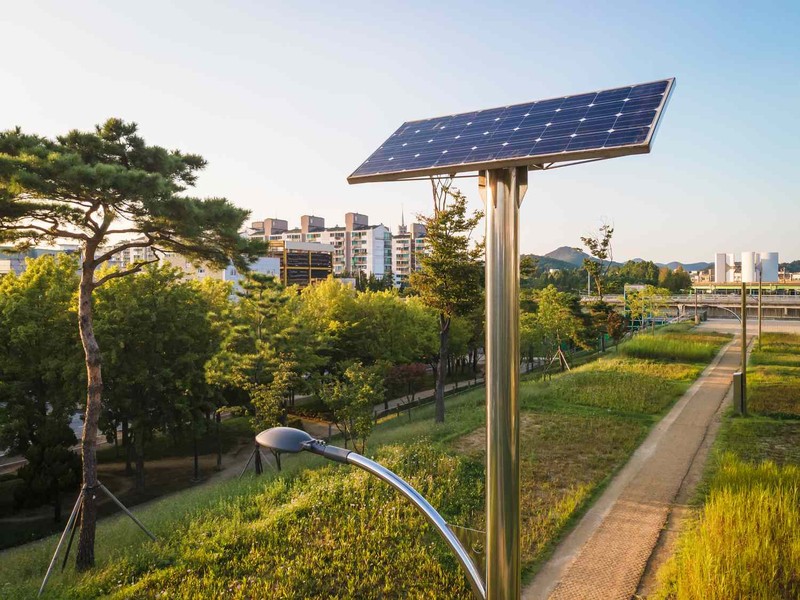In recent years, the adoption of residential solar power has soared, transforming rooftops into miniature power plants and empowering homeowners with renewable energy solutions. This article delves into the myriad benefits, costs, and the installation process of residential solar power systems, shedding light on its growing prominence in sustainable living.
Residential Solar Power
In the pursuit of sustainable living and reduced carbon footprint, residential solar power emerges as a beacon of hope. Unlike traditional energy sources reliant on finite fossil fuels, solar power harnesses the abundant energy of the sun, offering a clean, renewable, and eco-friendly alternative. It involves the installation of photovoltaic (PV) panels on residential rooftops, converting sunlight into electricity through the photovoltaic effect.
Benefits of Residential Solar Power
- Cost Savings: One of the most enticing benefits of residential solar power is the potential for significant cost savings. By generating your electricity, homeowners can slash their monthly utility bills and even earn credits through net metering programs, where excess energy is fed back into the grid.
- Environmental Impact: Embracing solar power reduces reliance on fossil fuels, mitigating greenhouse gas emissions and combating climate change. Each kilowatt-hour of solar energy with good solcellerproduced translates to reduced carbon dioxide emissions, contributing to a healthier planet for future generations.
- Energy Independence: With solar panels adorning their rooftops, homeowners gain a degree of energy independence, shielding themselves from the volatility of utility prices and disruptions in the power grid. This self-sufficiency fosters resilience and stability in energy supply.
- Government Incentives: Many governments incentivize the adoption of solar power through tax credits, rebates, and grants, making the initial investment more affordable and accelerating the return on investment for homeowners.
- Increased Property Value: Studies have shown that homes equipped with solar panels fetch higher prices and sell faster in the real estate market, appealing to eco-conscious buyers and reflecting the growing demand for sustainable living spaces.
Costs of Residential Solar Power
While the long-term benefits of residential solar power are undeniable, the upfront costs can be a deterrent for some homeowners. The total cost of a solar power system varies depending on factors such as the size of the installation, the efficiency of the panels, and regional installation costs. On average, a residential solar power system can range from $15,000 to $25,000 for a typical home. However, it’s essential to consider the substantial return on investment (ROI) and the potential for decades of energy savings.
The Installation Process
- Assessment and Design: The first step in installing a residential solar power system with the help of Soléeis a comprehensive assessment of the property’s solar potential. Factors such as roof orientation, shading, and available space are evaluated to determine the optimal design for the solar array.
- Permitting and Approval: Before installation can commence, homeowners must obtain the necessary permits and approvals from local authorities and utility companies. This ensures compliance with building codes and regulations governing solar installations.
- Installation of Panels: Once permits are secured, the installation team proceeds to mount the solar panels on the rooftop using specialized racking systems. Careful attention is paid to ensure proper alignment and orientation for maximum sunlight exposure.
- Electrical Wiring and Connection: After the panels are installed, they are wired together and connected to an inverter, which converts the direct current (DC) electricity generated by the panels into alternating current (AC) electricity used in homes. This AC electricity is then fed into the home’s electrical system or the grid.
- Testing and Commissioning: Upon completion of the installation, the system undergoes thorough testing to ensure optimal performance and safety. This includes testing the electrical connections, verifying output levels, and conducting a final inspection to certify compliance with standards and regulations.
Conclusion
Residential solar power represents a transformative force in the quest for sustainable energy solutions, offering homeowners a pathway to cleaner, cheaper, and more reliable electricity. Despite initial costs, the long-term benefits in terms of cost savings, environmental stewardship, and energy independence make solar power an increasingly attractive investment. As technology advances and incentives proliferate, the future of residential solar power shines ever brighter, illuminating homes and wallets alike with the promise of a brighter, more sustainable tomorrow.

